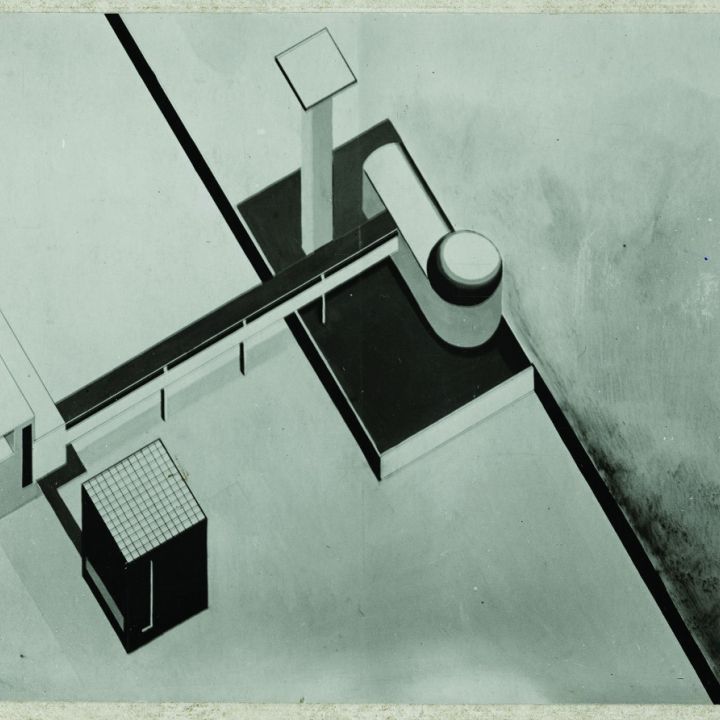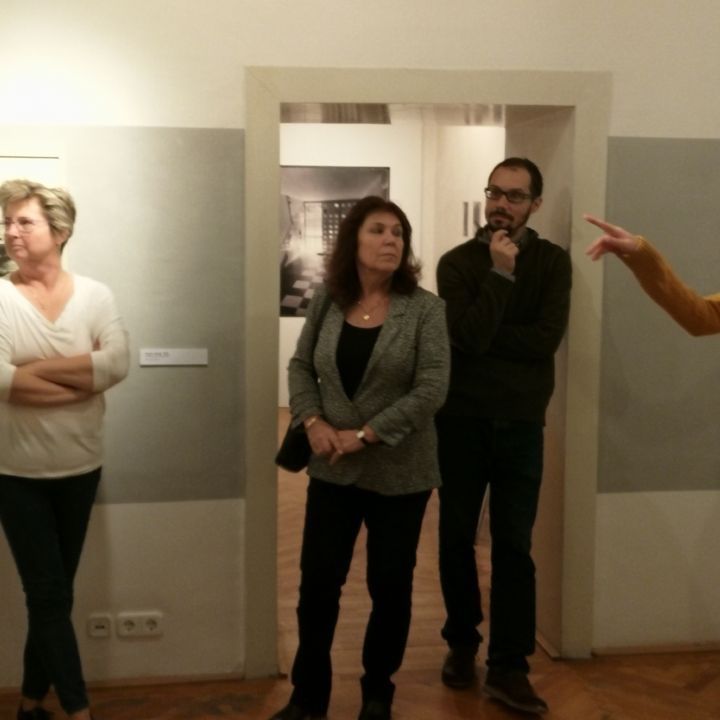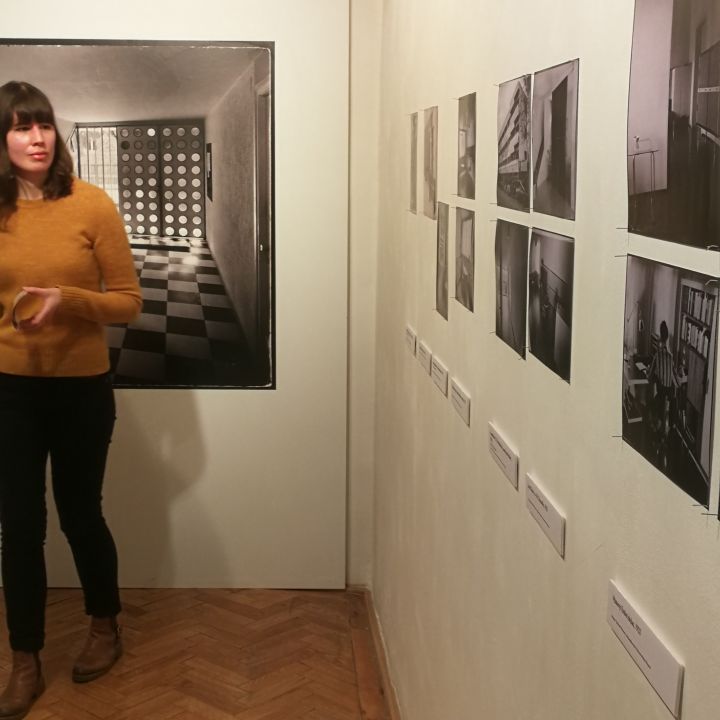The exhibition aims to summarise the life of Farkas Molnár, the inner development of his creative personality, the unfolding of his artistic-engineering skills and vision.
Farkas Molnár was born in Pécs in 1897 and was one of the greatest masters of the Hungarian Bauhaus.
Between 1915 and 1917 he studied at the Academy of Fine Arts then enrolled at the Faculty of Architecture of the Budapest University of Technology. In the spring of 1921 he visited Italy with Johan Hugo and Stefán Henrik and after returning home he worked on his landscape sketches. Between 1921 and 1925 he studied at the Bauhaus in Weimar under Walter Gropius, where he attended courses with Johannes Itten, Kandinsky and Theo van Doesburg. In 1922 with Henrik Stefán he produced a portfolio of lithographed pages from the Bauhaus printmaking workshop entitled Italy. His abstract compositions were published in the Vienna journal Ma. From 1923 onwards he was concerned with the idea and design of collective housing, which he wanted to combine with a modern solution for mass housing. In 1923 he appeared at the Bauhaus exhibition with his bold, constructivist 'Red Cube House'. In 1925 he returned to Hungary, obtained his degree in architecture two years later and gave up his activities as a painter and graphic artist. He was an outstanding representative of the new Hungarian architecture between the two World Wars. His work combined inventiveness with the disciplined restraint required at the time. His talent was evident in each of his works, but he was unable to develop it to its full potential without a commission of sufficient importance. From 1927 he worked in Budapest first with Pál Ligeti, then independently and in association with József Fischer. He mainly built villas and family houses. His works are the first and most outstanding works of Hungarian constructivist-functionalist architecture. His main works in Budapest include the villas on Lejtő Street, Harangvirág Street, Lotz Károly Street, Székács Street, etc. and the apartment building at 2 Toldy Ferenc Street.
The exhibition of Farkas Molnár in the House of Arts in Veszprém gives the opportunity to analyse the slices of his oeuvre, to deal with their interactions and to integrate them into a coherent structure. It is true that Molnár was only intensively involved in fine art and applied art until the mid-1920s and after that he worked more as an architect, so the two activities were separated in time, but from his first attempts at architecture – i.e. from the late 1910s – it is clear that he was preoccupied with similar artistic problems as a painter, graphic artist and architect. After all, we are talking about a single man, whose vision of the world, his artistic conception and its changes are represented by these genres and artistic fields together. It is particularly damaging to divide a life's work into genres during the avantgarde movement, which was characterised by the dissolution of genre boundaries and a new synthesis of artistic fields. Nor do we wish to suggest that after its demise as an avantgarde movement Molnár did not use his skills as a visual artist and pay attention to the achievements of contemporary painting and printmaking while practising as an architect. Molnár Farkas's complexity and all-round creativity make him a Renaissance 'uomo universale'. This character, which is not alien to his role as a classical avantgarde 'world director', is not a product of his years at the Bauhaus. The Weimar years only reinforced and manifested a particular convertibility of his personality, the 'all-artistic' potential.







